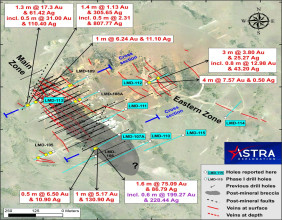Headlines
- Technology shares support notable progress across key sectors
- Energy prices decrease without disrupting momentum
- Canadian equities reflect international trends in a steady landscape
Canada’s primary equities benchmark, the S&P/TSX composite index, advanced on Tuesday as companies across technology and other vital segments achieved significant progress. This index, which is part of the larger S&P composite index group, represents an expansive range of listed companies and is a recognized measure of the health of the Canadian economy. Broad strength within technology and sustained interest across several major sectors enabled these companies to contribute to index advancement.
Broader Market Movement Across Industries
Several large companies, especially those aligned with technological progress, displayed noticeable strength. Developments within this sector influenced the S&P/TSX composite index in a positive manner as large and mid-sized constituents responded to market interest. Semiconductor companies and hardware producers tracked closely alongside their counterparts south of the border, allowing Canadian shares to reflect a similar rise witnessed in prominent United States indices.
At the close of the trading day, the index marked its highest level of the session after an uptick in the value of companies tied to advanced computing, hardware manufacturing, and other areas related to innovation. This upward trend also saw an accompanying rise across diverse industries in the index, reinforcing an expansive base for growth.
Technology Shares as a Driving Force
A broad cross-section of prominent companies across the technology landscape, including chip manufacturers and hardware specialists, experienced a significant boost. Factors such as increasing production capacity and widespread demand for components fueled this rise. The strong performance of semiconductor suppliers created a notable ripple effect across major listings on the S&P/TSX composite index.
This uptick in technology shares supported momentum across the entire composite, where names known for data services, digital solutions, and industrial automation showed visible progress. Companies that specialize in delivering cloud infrastructure and high-performance computing tools also reflected increased interest. The technology surge was supported by international trends, most notably corresponding gains in United States indices, where companies engaged in hardware design and specialized software witnessed substantial advancement.
Global Oil and Energy Considerations
Oil prices declined slightly during the session. The price per barrel of crude experienced fluctuations owing to international supply considerations and geopolitical developments in major oil-producing regions. Even though oil values trended lower, this did not hinder the index from moving upward due to the strength displayed by companies outside of traditional energy segments.
Refiners and pipeline operators based in Canada, with tickers that contribute to the S&P/TSX composite index, witnessed stable trading sessions despite fluctuations in crude oil contracts. Global energy supplies were viewed as adequately balanced after developments concerning shipping routes through critical waterways. Concerns over potential disruptions to shipments through narrow straits and major transit points lessened as diplomatic efforts gained traction and geopolitical tensions showed signs of easing.
Cross-Border Influences on Market Activity
Developments across the United States equity indices had a noticeable spillover effect into Canada. Broader U.S. indices such as the Dow Jones Industrial Average and Nasdaq Composite displayed robust upward trends driven by leadership from technology companies specializing in semiconductor design and hardware production. These influences played a supportive role for Canadian companies that align with international trends across subsectors like automation, data analytics, and hardware solutions.
Increased certainty surrounding global trade policies also provided reassurance to companies that rely on cross-border supply chains. The impact of tariff decisions and diplomatic engagements yielded more stable pricing and sustained activity across a number of vital segments. Several U.S.-based companies with links to major Canadian suppliers reflected a normalization of trade, allowing for smoother procurement and delivery processes across the region.
Economic Indicators and Industry Developments
Macroeconomic factors like stable interest rates and international commerce patterns further supported business sentiment across the index. Indicators tied to employment, output capacity, and durable goods ordering showed resilience despite ongoing fluctuations in commodity prices. Industrial companies with substantial capital assets and long-term service contracts managed to preserve stable trading patterns owing to robust order backlogs and broad-based customer interest.
Manufacturers of heavy equipment and machinery witnessed increased demand stemming from large-scale public and commercial projects, both in Canada and the United States. Providers of engineering solutions, logistics operations, and specialized components also noted stable transaction volumes. Consumer staples companies remained steady throughout the session, underscoring their importance as part of the diversified S&P/TSX composite index.
Trade Routes and Energy Flow Factors
Critical shipping routes for crude, especially across well-known chokepoints like the Strait of Hormuz, attracted attention due to their importance in maintaining a consistent flow of energy supplies. A stable diplomatic climate ensured that exports of refined products and petrochemicals faced minimal disruption. This environment enabled refiners and transport companies to maintain consistent throughput, providing vital materials to downstream industries spanning from manufacturing to agriculture.
Despite global headlines concerning international tensions, the ability of maritime routes to operate smoothly assured buyers and sellers across energy supply chains. This allowed pipeline operators and shippers to maintain capacity rates without interruption, preserving stable operations for Canadian companies included in the composite index.
Accessing the S&P/TSX composite index for Market Insights
The S&P/TSX composite index is an important reference point for tracking diverse segments of the Canadian economy. Companies from technology, energy, industrials, materials, and consumer staples contribute to a broad representation of domestic output and trade. It is used to observe how a variety of organizations collectively respond to international developments and industry-specific trends. Details surrounding this index can be explored further by visiting the official s&p composite index resource to gain a structured overview of constituent companies and sector allocations.
Evolving Tech and Broad Market Support
With companies supplying a variety of hardware solutions and advanced software, ongoing industry developments continue to support Canada’s equity landscape. This broad composition enables a diverse set of industries to maintain steady trading and underscores the depth present across the S&P/TSX composite index. Equities spanning manufacturing, materials extraction, industrial design, and energy logistics collectively support a stable environment for ongoing operations across multiple subsectors.
This composite index reflects the multifaceted character of Canada’s equity market, and its consistent upward trajectory illustrates the strength of companies spanning sectors and geographies.





